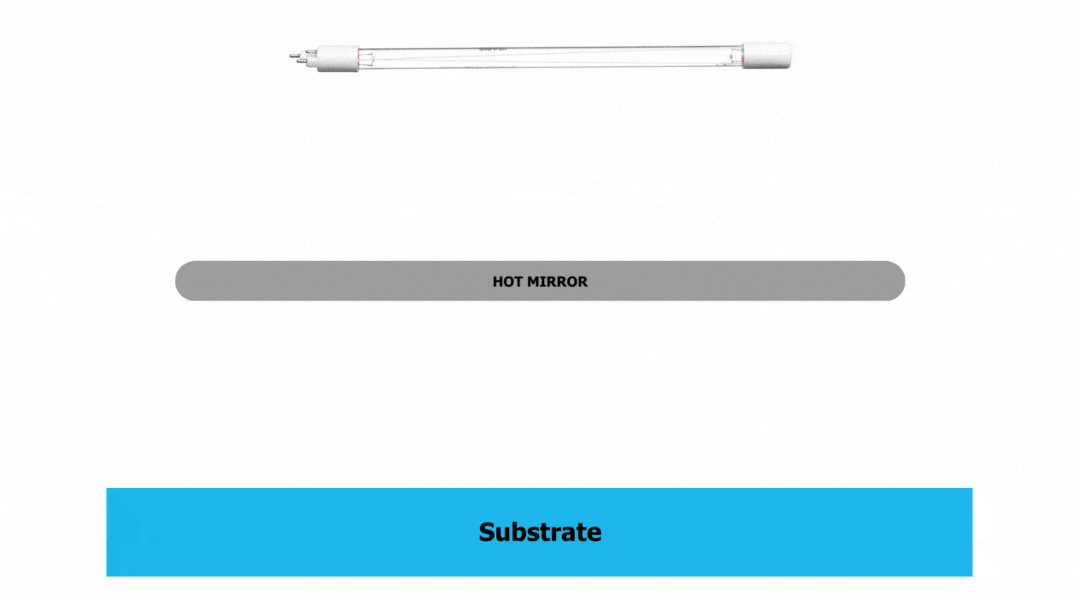There are various ways in which to ensure or improve the curing efficiency of your print, coating or bonding systems. These include the use of reflectors (to direct more of the UV light onto the substrate) or quartz plates (that help filter out heat and keep the lamp clear of any dust or ink that may come off the substrate). Another such aid for heat control is the use of hot and cold mirrors.
Removing heat from the substrate
Out of the two (hot or cold) a hot mirror is more common in the curing world. This is because a hot mirror reflects infrared (IR) light back into the light source whilst still allowing passage of other light wavelengths such as ultraviolet and visible light. Reflecting the IR light in this way helps remove heat from the system, which can be useful if you have a more heat-sensitive substrate. We’ve also seen hot mirrors used in countries that have higher atmospheric temperatures as an additional way of controlling the system running temperature.

Hot mirrors work by applying a thin coating (usually soda-line or borosilicate) to a glass substrate which effectively separates out heat from light waves. They can filter out up to 90% of near-infrared light and can be specified to sit at an angle of light incidence ranging from 0 to 45 degrees.
The opposite effect
Cold mirrors are essentially the opposite of hot mirrors. They work in a similar way using a dichroic coating, but these reflect ultraviolet and visible light whilst allowing infrared light to pass through. They are used to optimise systems that use infrared light as the curing trigger.
If you are finding that your curing system is struggling with overheating, then we would always recommend you check with the system manufacturer that the set-up is correct and that maintenance routines are being carried out. It may be that a simple system service can resolve this issue, but if there are other factors (such as higher atmospheric temperatures) then the use of hot mirrors could be considered to help keep heat away from the substrate.
If you’d like to explore this in more detail, please Contact Us using the form on our website.
Latest Articles
A Busy Year! Alpha-Cure’s 2025 Year in Review
A Year of Global Reach and Innovation for Alpha-Cure As 2025 draws to a close, we’re reflectin...
View ArticleAvoid Holiday Disruption: Key Order Deadlines for Year End Delivery
As we approach the end of the year, production schedules get tighter and distribution channels come ...
View ArticleAll UV Lamps. One Standard: How Alpha-Cure Scaled UK Excellence Globally
When Alpha-Cure expanded our manufacturing footprint to China, it wasn’t about lowering costs, it ...
View ArticleIndustry Focus – Helping Open New Markets for UV Technology
A guide to support local distributor growth At Alpha-Cure, we’re proud of the strong presence ...
View Article